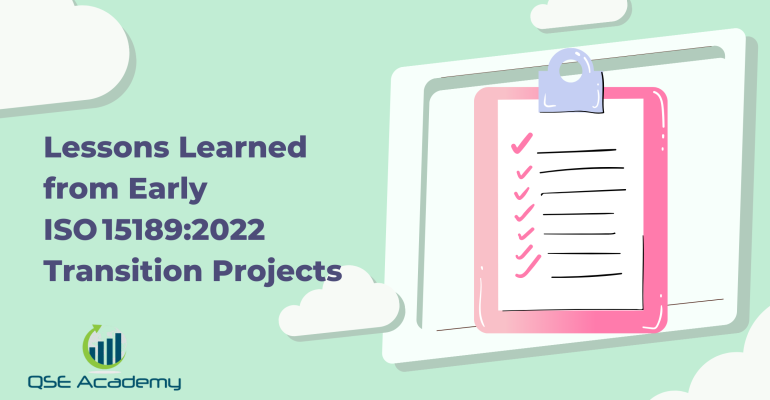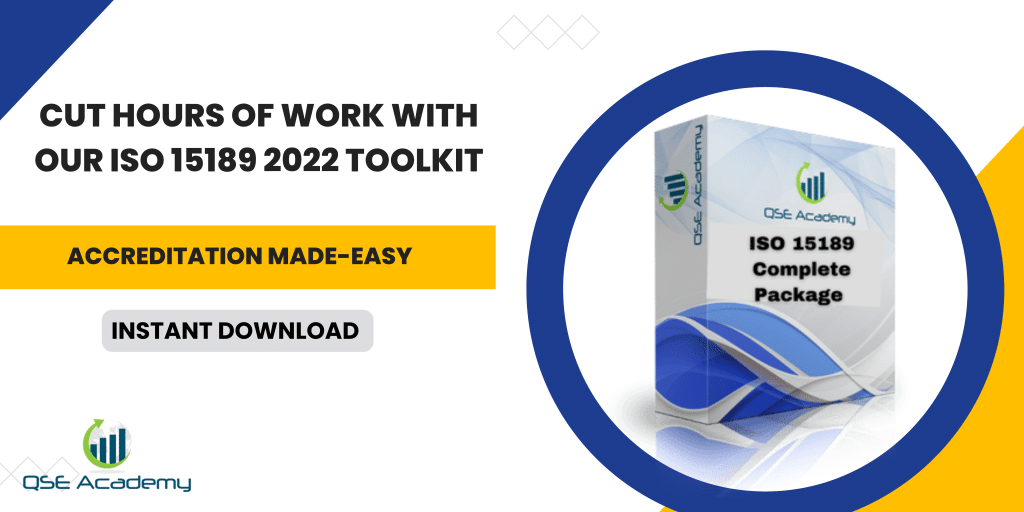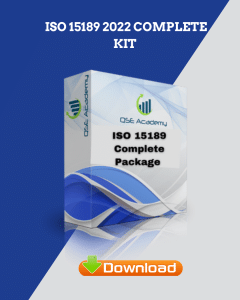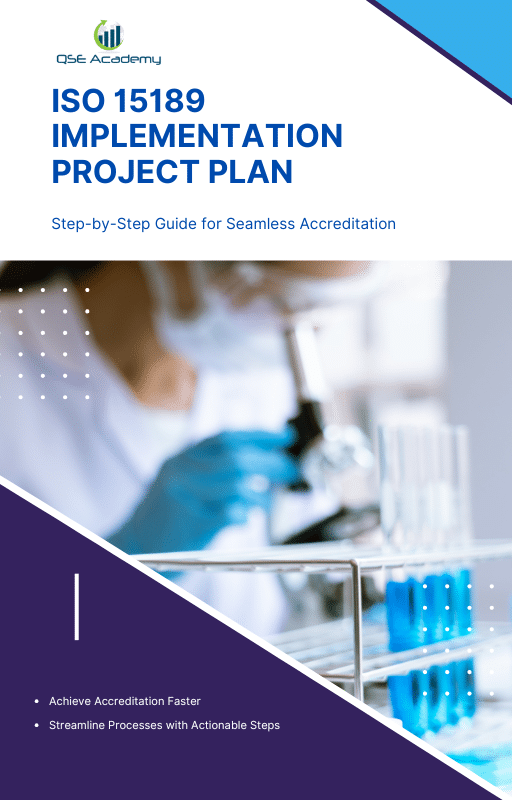Lessons Learned from Early ISO 15189:2022 Transition Projects
Last Updated on October 22, 2025 by Hafsa J.
What Early Transitions Revealed
When ISO 15189:2022 was released, many laboratories expected a routine update—an administrative exercise to swap clause numbers and reformat manuals.
But early transition projects proved otherwise. The new standard demands more than paperwork; it asks laboratories to demonstrate competence, control risk, and validate digital systems with measurable evidence.
After guiding several early adopters through the transition, one thing became clear: success depends less on rewriting documents and more on understanding how each requirement connects to patient safety and operational reliability.
This pillar article consolidates insights from those early experiences. It’s built to help you:
-
Recognize where most laboratories struggled and how to avoid the same pitfalls.
-
Understand which parts of ISO 15189:2022 require the biggest cultural or procedural shifts.
-
Apply practical lessons that will save time, reduce audit stress, and strengthen compliance.
You’ll see what the early projects taught us—what worked, what didn’t, and how to apply those lessons to your own transition plan.
The Reality of Early Adoption – More Than a Paper Exercise
The first laboratories to transition to ISO 15189:2022 learned quickly that this wasn’t a “cut and paste” upgrade.
The structure, intent, and emphasis of the new standard changed how quality management works day to day.
In the 2012 version, compliance could often be proven through documentation—if it was written, reviewed, and signed, it usually passed.
The 2022 version shifts the focus from what’s written to what’s working. Assessors now want evidence that your system produces consistent, reliable, and safe results, not just that procedures exist.
This shift exposed a critical truth: early transitions weren’t difficult because the standard was harder; they were difficult because laboratories had to think differently.
Many teams realized their systems were built around maintaining documents, not measuring outcomes. Once they understood that competence, impartiality, risk, and information integrity were interconnected, everything started to align naturally.
Pro Tip: Treat your transition as a systems realignment, not a rewrite. When you update one process, look at how it affects the others—training, competence, risk records, and data validation are all now linked under the 2022 model.
Common Mistake: Some labs updated their manuals immediately without understanding clause intent. They later spent twice as long fixing inconsistencies when audits revealed gaps between what was written and what was practiced.
The early adopters who slowed down first—reviewing, mapping, and testing before revising—ended up transitioning faster overall.
Lesson 1 – Understanding Before Updating Saves Time
One consistent pattern among early transition projects was this: laboratories that took time to understand the new standard before rewriting anything finished faster and faced fewer nonconformities later.
The instinct to “get started” by updating documents is strong—but in ISO 15189:2022, that approach backfires. The standard isn’t just rearranged; its clauses reflect a new logic built around risk-based thinking and competence. You can’t simply cross-reference old clause numbers—you have to grasp the intent behind each one.
Teams that began with structured study sessions or clause-mapping exercises discovered how much smoother updates became. They spent less time debating interpretations and more time applying practical improvements.
Pro Tip: Create a “clause comparison matrix.” List each 2012 clause beside its 2022 equivalent, note what changed, and add a column for its operational impact. This exercise alone helps prevent duplication, conflicting updates, and wasted effort.
Example: One laboratory used this matrix to identify overlaps between its old “Management Responsibility” section and the new “Structural Requirements” clause. By merging redundant procedures, they cut their documentation volume by 25%—without losing control.
Common Mistake: Jumping straight into editing your Quality Manual without reviewing the crosswalk. It often leads to inconsistent references, outdated terminology, and procedures that no longer align with the 2022 clauses.
Understanding first isn’t about delay—it’s about precision. When you know why the requirements changed, you’ll know how to adjust your system effectively the first time.
Lesson 2 – Risk Management Is the Core Connector
If there’s one theme that runs through every successful ISO 15189:2022 transition, it’s this: risk management connects everything.
Early projects revealed that labs treating risk management as a single document—often a static spreadsheet—struggled to demonstrate compliance. The new standard expects risk-based thinking to flow through all processes: competence, information management, purchasing, equipment control, and even audit planning.
ISO 15189:2022 doesn’t view risk as a separate activity; it treats it as part of decision-making. Assessors now ask:
-
How did you decide to implement this control?
-
What risks did you consider?
-
How do you monitor whether that control still works?
When your answers trace back to a living risk register, your entire system gains credibility.
Pro Tip: Use one risk register but categorize entries by process—testing, reporting, equipment, information systems, and management. This structure makes updates easy and shows assessors you’re managing risks systematically.
Example: One laboratory integrated risk review into its quarterly management meetings. Instead of revisiting the same list, they reviewed only high-priority risks with recent changes. That kept the process lean and focused while proving continual monitoring.
Common Mistake: Filling out risk logs once a year just to “tick the box.” ISO 15189:2022 expects risk awareness to guide real actions—like training, audit priorities, or system upgrades.
When risk management becomes a daily mindset rather than a yearly activity, everything else falls into place. It drives improvement, strengthens competence, and shows assessors that your QMS isn’t reactive—it’s proactive.
Lesson 3 – Documentation Updates Must Reflect Risk and Competence
Early ISO 15189:2022 transition projects revealed a common pattern: many laboratories updated documents for appearance, not intent.
They changed titles, revised clause references, and reformatted Quality Manuals — but missed the deeper requirement of integrating risk management and competence evaluation into daily operations.
The 2022 version isn’t asking for more paperwork; it’s asking for smarter documentation that connects process, purpose, and performance.
Every procedure, form, or record should now answer three silent questions:
-
What risk does this control prevent?
-
Who is competent to perform it?
-
How do we know it’s effective?
Quality Manuals that applied this thinking became simpler, clearer, and more defensible during audits.
Instead of long text blocks, they used concise sections linked to procedures and records that proved actual performance.
Pro Tip: Add a short “Risk and Rationale” section at the end of each procedure. It demonstrates awareness of why controls exist — one of the key expectations under ISO 15189:2022.
Common Mistake: Updating procedures but leaving old templates and records unchanged. Assessors notice when your forms don’t reflect your documented process.
Key takeaway:
Updating documentation is not a formatting task — it’s a strategic exercise in proving competence and managing risk. When written with purpose, your procedures become evidence of compliance, not just descriptions of it.
Lesson 4 – Staff Awareness Drives Compliance More Than Templates
Across all early ISO 15189:2022 transition projects, one lesson stood out clearly — documentation alone doesn’t ensure compliance.
What truly determines success is whether staff understand the changes and can apply them in their daily work.
Many laboratories invested heavily in updated templates and polished manuals but saw audit findings because employees couldn’t explain how the new clauses affected their roles.
ISO 15189:2022 expects awareness, not memorization — assessors want to see that staff know why certain procedures exist, what risks they control, and how their actions support competence and impartiality.
The most effective transition programs built training around real workflows instead of theory.
They conducted short, role-based sessions — focusing on one concept at a time, like “risk in sample handling” or “maintaining impartiality in test validation.”
This approach made compliance natural, not forced.
Pro Tip: Incorporate ISO 15189:2022 awareness into routine activities — quick discussions during shift handovers, quality meetings, or refresher briefings. Frequent, informal reinforcement is far more effective than long seminars.
Common Mistake: Treating awareness as a single training event. Assessors can quickly tell when understanding fades after one session.
Key takeaway:
Compliance under ISO 15189:2022 depends on people, not paperwork. When staff truly understand the intent behind each requirement, templates become tools — not crutches.
Lesson 5 – Internal Audits Reveal True Readiness
One consistent insight from early ISO 15189:2022 transition projects is that internal audits remain the most reliable predictor of success.
They expose weaknesses long before accreditation assessors do — but only if they’re done with the right focus.
In the 2012 version, many labs approached internal audits as checklist exercises.
Under the 2022 standard, that approach no longer works. Assessors expect internal audits to evaluate effectiveness, not just existence.
In other words, it’s not enough to ask, “Do you have a procedure?” — auditors must now ask, “Does this process achieve the intended result?”
The best-performing laboratories revised their internal audit checklists to include risk management, competence, and information integrity.
This shift turned audits into active learning tools rather than administrative tasks.
Example of updated audit question:
Instead of “Is equipment maintenance performed regularly?”
Ask: “How does maintenance control risk to test validity and patient safety?”
Pro Tip: Schedule at least two internal audits during your transition — one to identify gaps early, and another closer to assessment to confirm readiness. Treat the second as a full mock audit following the accreditation flow.
Common Mistake: Auditing only documents and missing field verification. Observing actual work practices gives far more valuable insight into competence and risk control.
Key takeaway:
Internal audits are no longer box-ticking exercises. When performed with intent, they provide assurance that your QMS truly meets ISO 15189:2022 expectations — not just on paper, but in practice.
Lesson 6 – Leadership Involvement Accelerates Implementation
Early ISO 15189:2022 transition projects made one thing clear — leadership engagement determines the pace and quality of implementation.
When management treated the transition as a quality department task, progress slowed, and communication gaps appeared.
But when leadership actively participated, the process gained direction, accountability, and measurable results.
ISO 15189:2022 strengthens the expectation for management commitment by linking leadership actions to patient safety, risk management, and performance evaluation.
This means decision-makers must not only approve resources but also demonstrate involvement in planning, reviews, and improvement.
Leadership’s role isn’t about micromanaging — it’s about enabling clarity.
When top management consistently reviews risks, tracks competence data, and follows up on audit outcomes, it sets a visible tone of quality culture throughout the laboratory.
Pro Tip: Include transition progress as a fixed item in monthly leadership meetings. Reviewing status updates alongside operational metrics keeps the transition visible and prevents last-minute catch-up before assessments.
Common Mistake: Delegating the entire transition to the quality team and expecting updates only at audit time. Without leadership engagement, decisions on training, validation, and resources often stall.
Key takeaway:
Leadership involvement isn’t optional under ISO 15189:2022 — it’s integral.
When management drives the transition actively, alignment across departments improves, timelines shorten, and compliance becomes part of how the organization operates, not just a certification goal.
Lesson 7 – Information Management Systems Need Early Attention
Among all the lessons from early ISO 15189:2022 transitions, information management stood out as the area most underestimated by laboratories.
Many assumed that if their Laboratory Information System (LIS) or LIMS was already functional, it automatically met the new requirements.
It didn’t.
ISO 15189:2022 introduced explicit expectations for digital systems — validation, data integrity, cybersecurity, and access control are now auditable.
Assessors no longer focus solely on analytical processes; they want proof that digital systems protecting patient data are secure, reliable, and controlled.
Labs that prioritized this area early avoided last-minute complications. They conducted formal validations, tested data backup and recovery, and documented user access reviews.
Those that left it for last often discovered gaps too late — missing validation reports, unclear data ownership, or untested disaster recovery procedures.
Pro Tip:
Treat your LIS/LIMS like any other piece of laboratory equipment. Validate it before use, document its performance, and review it periodically to confirm reliability.
Common Mistake:
Relying on the IT department alone. ISO 15189:2022 assigns responsibility for data integrity to the laboratory, not to external vendors or IT providers.
Key takeaway:
Information management is no longer a supporting function — it’s a compliance requirement.
Address it early in your transition plan to avoid major findings and to show assessors that your laboratory protects data with the same rigor it applies to test results.
Lesson 8 – Risk-Based Thinking Works Best When Integrated, Not Isolated
One of the most misunderstood elements of ISO 15189:2022 during early transitions was risk management.
Many laboratories treated it as a new form to fill out instead of a mindset to apply across all activities.
That approach created extra paperwork without adding real control or insight.
The standard doesn’t expect a stand-alone risk department or complex scoring models.
It expects risk awareness to be embedded into daily decision-making — from equipment maintenance and staff training to patient data handling.
The most effective transition projects integrated risk management into existing processes rather than creating parallel systems.
They linked it directly to:
-
Internal audit findings
-
Nonconformity investigations
-
Management review discussions
-
Preventive and corrective actions
When risks were discussed in these existing forums, awareness spread naturally, and staff understood the relevance of risk thinking in their own roles.
Pro Tip:
Use your existing nonconformity and improvement logs to track risk discussions. Adding one simple column for “Associated Risk” shows integration without extra documentation.
Common Mistake:
Treating risk as a once-a-year exercise or confining it to one spreadsheet. ISO 15189:2022 requires risk evaluation to be continuous and dynamic.
Key takeaway:
Risk-based thinking only works when it’s part of how the laboratory operates every day.
Integrate it into core processes instead of isolating it as a separate task — that’s what makes your system both compliant and genuinely resilient.
Lesson 9 – Early Communication with Accreditation Bodies Reduces Surprises
Early transition projects confirmed that clear and proactive communication with accreditation bodies made a significant difference in outcomes.
Laboratories that engaged their assessors early — sharing timelines, gap analyses, and transition plans — experienced smoother reviews, fewer delays, and fewer misunderstandings about documentation expectations.
ISO 15189:2022 introduced several interpretive changes that accreditation bodies handle differently depending on region or program.
That’s why waiting until your scheduled audit to discuss your transition can create last-minute confusion.
Some accreditation bodies require pre-submission of updated documentation, while others expect an on-site verification of the new clauses.
Pro Tip:
Notify your accreditation body of your transition plan as soon as it’s approved internally. Ask for clarification on:
-
Required documents before the next audit
-
Deadlines for full implementation
-
Whether partial assessments are permitted during the transition period
Common Mistake:
Assuming all accreditation bodies follow the same process or timeline. In reality, some have unique templates or digital submission portals that require early preparation.
Early coordination also builds trust. When assessors see that your laboratory is organized, transparent, and proactive, the assessment becomes a collaborative review — not a corrective exercise.
Key takeaway:
Plan your communication with your accreditation body as deliberately as you plan your documentation updates.
The earlier you align expectations, the fewer surprises you’ll face during your transition audit.
Common Themes Across Early Projects
After analyzing the first wave of ISO 15189:2022 transition projects, several consistent themes emerged.
These patterns reveal what truly drives a smooth transition — and what causes unnecessary setbacks.
1. Understanding Before Action
Laboratories that began by studying the intent of the new standard adapted faster.
Teams that focused on “clause-matching” or reformatting documents without context often had to redo their work later.
A deep understanding of competence, impartiality, and risk-based thinking made every subsequent step clearer.
2. Integration Over Addition
Successful laboratories didn’t add new layers of paperwork.
They integrated new requirements — such as risk evaluation and data integrity — into existing systems.
This made compliance more natural and reduced administrative fatigue.
3. Leadership and Communication
Active leadership support proved decisive.
When management tracked transition progress, approved resources promptly, and maintained regular communication with staff and accreditation bodies, implementation stayed on schedule.
Without that involvement, projects stalled or lost momentum.
4. Continuous Awareness
Staff engagement directly influenced audit outcomes.
Labs that treated training and awareness as ongoing activities — instead of one-time sessions — showed stronger audit performance and fewer nonconformities.
5. Documentation as Evidence, Not Decoration
Every document that passed audit scrutiny served a clear purpose: it connected risk, competence, and performance.
Templates or manuals written only to “look compliant” consistently failed under review.
6. Data Integrity as a Central Focus
Digital validation, backup verification, and access control emerged as critical areas of scrutiny.
Information management is now one of the most significant differentiators between well-prepared and unprepared laboratories.
7. Early Internal Audits as Predictors of Success
Internal audits served as the strongest indicators of readiness.
Labs that performed early and risk-focused audits faced minimal findings during external assessments.
8. Collaboration with Assessors Simplifies Transition
Proactive dialogue with accreditation bodies helped clarify expectations and reduce ambiguity.
Labs that shared progress reports and requested early feedback experienced smoother assessments.
Key takeaway:
Across all projects, the laboratories that succeeded didn’t just follow the new clauses — they understood them, integrated them, and verified them through engagement, leadership, and continual improvement.
FAQs – Early ISO 15189:2022 Transitions
Early transition projects brought up a consistent set of questions from laboratories preparing to update their systems.
These answers summarize the most relevant clarifications from assessors and implementation teams to help you prepare with confidence.
Q1: What were the most common findings during early ISO 15189:2022 assessments?
The most frequent findings involved weak integration of risk management, incomplete competence evaluation records, and missing validation evidence for laboratory information systems.
In several cases, documentation was compliant on paper, but implementation didn’t match in practice.
The standard’s intent is now outcome-based, so evidence of performance carries more weight than procedural wording.
Q2: How long should a full transition realistically take?
On average, successful laboratories completed their transition within 6–12 months, depending on complexity and resource availability.
Most allocated:
-
2 months for gap analysis and planning
-
3–5 months for document and record updates
-
2–3 months for internal audits and management review before assessment
Starting early allows sufficient time for verification and staff training, which often take longer than documentation updates.
Q3: How often should internal audits be conducted during transition?
At least two full audits are recommended — one early in the transition to identify gaps, and another before the accreditation assessment to confirm readiness.
High-risk areas such as information management and competence verification may need targeted mini-audits in between.
Q4: Do all laboratories need to change their Quality Manual format?
Not necessarily. You can retain your existing format if it clearly aligns with Clauses 5–8 of ISO 15189:2022 and demonstrates risk-based control and competence management.
Assessors focus on clarity and traceability, not on template design.
Q5: Is additional training required for staff already familiar with ISO 15189:2012?
Yes, but it can be concise and targeted.
Even experienced staff must understand the intent of new clauses—especially on impartiality, risk management, and data integrity.
Short, role-based awareness sessions are usually sufficient to demonstrate compliance.
Q6: Should we notify our accreditation body before completing the transition?
Absolutely.
Accreditation bodies prefer early communication. Submitting your transition plan, timelines, and internal audit results ahead of time helps them schedule assessments efficiently and prevents delays.
Key takeaway:
The early transitions proved that preparation, awareness, and proactive communication matter more than speed.
By understanding these FAQs and aligning your approach accordingly, your laboratory can move through ISO 15189:2022 implementation confidently and without unnecessary rework.
Turning Lessons into a Smarter Transition Strategy
The first wave of ISO 15189:2022 transitions made one thing evident — laboratories that approached the change with structure and understanding achieved compliance faster and with fewer corrections.
Those that focused on copying documents or meeting deadlines without grasping intent spent more time reworking their systems after audits.
The lessons are straightforward but powerful:
-
Understand before you implement. Every clause has a purpose that ties back to competence, impartiality, and patient safety.
-
Plan your transition as a project. A structured gap analysis, defined responsibilities, and a clear timeline prevent duplication and confusion.
-
Train continuously. Awareness and understanding across all levels of the laboratory are what turn requirements into consistent behavior.
-
Validate your readiness. Internal audits and management reviews are your strongest tools for confirming effectiveness before accreditation.
-
Engage early with your accreditation body. Clear communication eliminates uncertainty and helps align your documentation with their expectations.
ISO 15189:2022 isn’t a stricter version of the old standard—it’s a smarter one.
It rewards laboratories that understand their systems, manage risk proactively, and prove competence through results.
If you’re preparing your transition strategy, QSE Academy’s ISO 15189:2022 Transition Toolkit provides templates, audit checklists, and guidance materials built around these proven lessons.
It’s designed to help laboratories move from insight to implementation—confidently, efficiently, and in full alignment with the new standard.
Whether it’s ISO 9001, ISO 22000, or the cosmetics-focused ISO 22716, I’ve spent my career I’m not here to call myself an expert—I prefer “enthusiast” because I truly love what I do. When I’m not writing about standards, you’ll probably find me playing Piano 🎹, connecting with people, or diving into my next big project💫. I’m an engineer specialized in the food and agricultural industry
make ISO standards less intimidating and more approachable for everyone.
turning complex jargon into clear, actionable steps that businesses can actually use.
There’s something incredibly rewarding about helping people navigate food safety and quality management systems
in a way that feels simple, practical, and even enjoyable.
I have a Master’s in QHSE management and over 12 years of experience as a Quality Manager
I’ve helped more than 15 companies implement ISO 9001, ISO 22000, ISO 22716, GMP, and other standards
My clients include food producers, cosmetics manufacturers, laboratories, and service companies
I believe quality systems should be simple, useful, and efficient.













